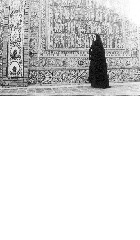
Women Like Us 2002
Distributed by Women Make Movies, 462 Broadway, New York, NY 10013; 212-925-0606
Produced by Persheng Sadegh-Vaziri
Directed by Persheng Sadegh-Vaziri
VHS, color, 60 min.
College - Adult
Middle Eastern Studies, Women's Studies, Multicultural Studies
Date Entered: 05/28/2004
Reviewed by Beth A. Kattelman, Columbus Metropolitan Library, Columbus, OHIn this documentary, filmmaker Persheng Sadegh-Viziri profiles five Iranian women who provide candid information about their dreams, beliefs and everyday lives. Persheng has chosen as her subjects a nurse, a journalist, a rice farmer, a religious college graduate and a piano teacher. The wide varieties of occupations these women hold provide the viewer with a nice overview of life for women in Iran. Pershing’s camera follows the women through some of their daily rituals, and allows the audience to eavesdrop as they discuss their values and attitudes toward the tug-of-war between modern society and historical religious customs. Persheng is an Iranian expatriate who has returned after twenty years to gather the stories of these remarkable women, so she presents their stories and views with a great deal of insight and sympathy.
The information offered by the women, and the look at Iranian daily life is fascinating but, unfortunately, the film is not as informative or powerful as it might be because it suffers from a lack of contextualization. The juxtaposition of the five women’s stories creates an interesting pastiche and gives the viewer a general sense of Iranian life and culture, but it doesn’t serve to really explain some of the history and cultural concepts referenced in the film. While some viewers might already be familiar with Iranian history and culture, many may not. Persheng does provide some brief narration, but not enough to really flesh out the full details of what the women are discussing. Narration providing more context and background information could have definitely made the film stronger and more useful as a teaching tool.
The sound and picture quality of the film are very good and the close-up views of the streets of Iran are interesting and informative. This video would make a good addition to academic libraries that are building their multicultural collections or for libraries that have a strong women’s studies focus. Overall, the film is an interesting portrait of women who must try to reconcile personal feelings and desires with strict societal and religious precepts and provides an insightful look at the changing role of women in Iran.